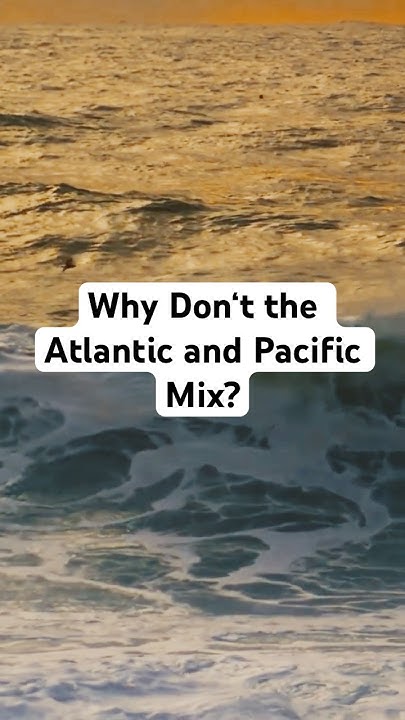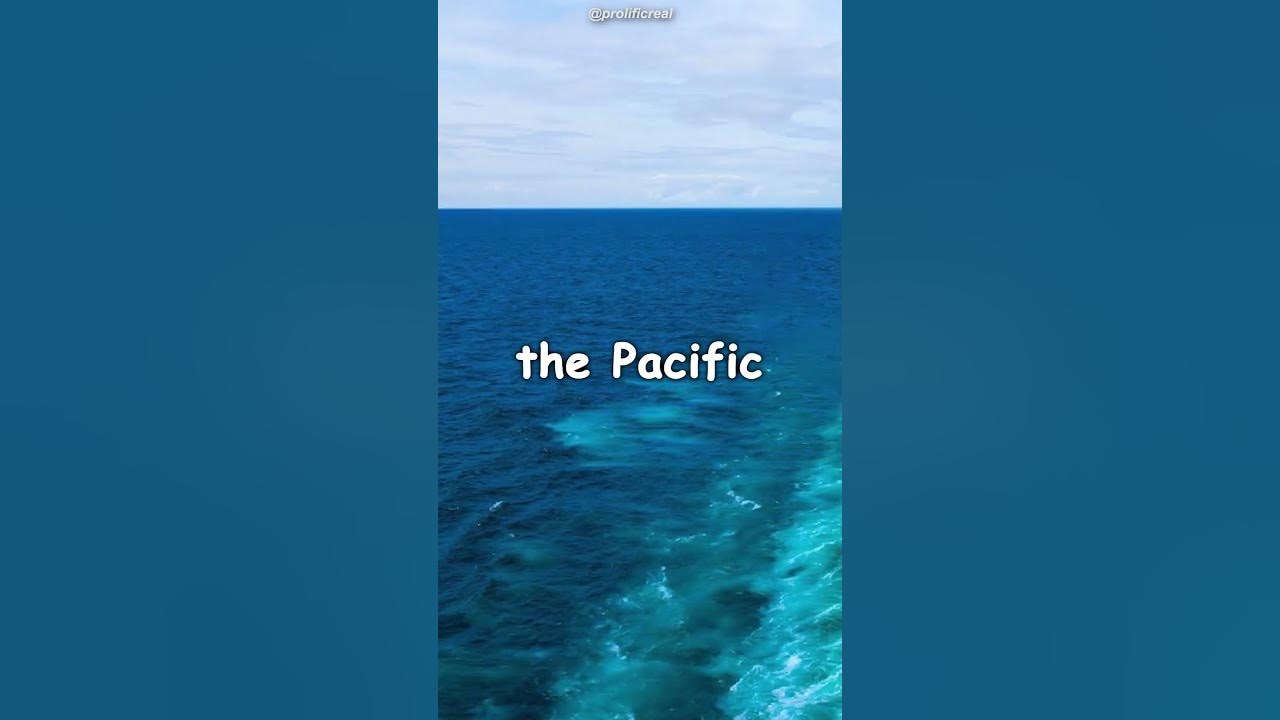Why Don't The Atlantic And Pacific Mix

Ever stood at a beach, gazing out at the vast ocean, and wondered if the Atlantic and Pacific oceans are just... mixing it up out there?
Like a giant cosmic blender gone wild? Well, surprise! They meet, but they don't exactly *mingle* in the way you might think.
The Big Meet-Up: A Panama Party
The spot where these two titans of water meet is near Panama, that skinny little land bridge connecting North and South America. Imagine the view!
It's not a gentle handshake; it's more like two strong personalities bumping into each other at a party.
They acknowledge each other, maybe exchange a polite nod, but then mostly stick to their own groups.
So, Why the Hesitation?
Why the awkwardness? It's not ocean racism, I promise!
Several factors contribute to this watery segregation.
First, there's density. Think of it like oil and vinegar. The Atlantic and Pacific have different salt contents, and therefore different densities.
One is saltier and heavier, the other less so. The heavier one tends to sink, keeping them somewhat separate.
Then there's temperature. Cold water is denser than warm water. Different temperatures also influence how these bodies of water interact.
It creates a barrier that discourages instant mixing.
And let's not forget the currents. These underwater rivers are like highways for marine life.
They also play a significant role in preventing the immediate blending of the two oceans.
The currents act as a buffer, pushing the waters along separate paths.
A Visible Divide? The Truth and the Myths
You may have seen photos or videos online claiming to show a clear, distinct line where the Atlantic and Pacific meet.
Sometimes with captions about how they "refuse to mix".
These images often depict murky, sediment-rich water clashing with clearer blue water. It’s visually striking, no doubt!
However, these dramatic lines aren't *always* the permanent border between the two oceans.
What you're often seeing is the result of different river outflows carrying varying sediment loads into the ocean.
The sediment creates a visible difference that looks like a dividing line.
They *do* eventually mix, just not instantly and dramatically as some pictures suggest.
More Than Just Water: A Tale of Two Ecosystems
The separation, even if not always visually obvious, has a profound effect on marine life.
The Atlantic and Pacific oceans have distinct ecosystems with unique species adapted to their specific environments.
Imagine if they mixed completely overnight! It would be chaos for the fish, plants, and other creatures.
The gradual mixing allows for adaptation and prevents ecological upheaval.
So, the next time you're near the ocean, remember it's not just one big homogenous soup.
It's a complex, dynamic environment with hidden boundaries and unique personalities. It's like attending a party with all your friends and relatives and after an initial greeting everyone ends up chatting with the people they know better.
The Atlantic and Pacific are proof that even massive bodies of water can have their own ways of doing things.


















